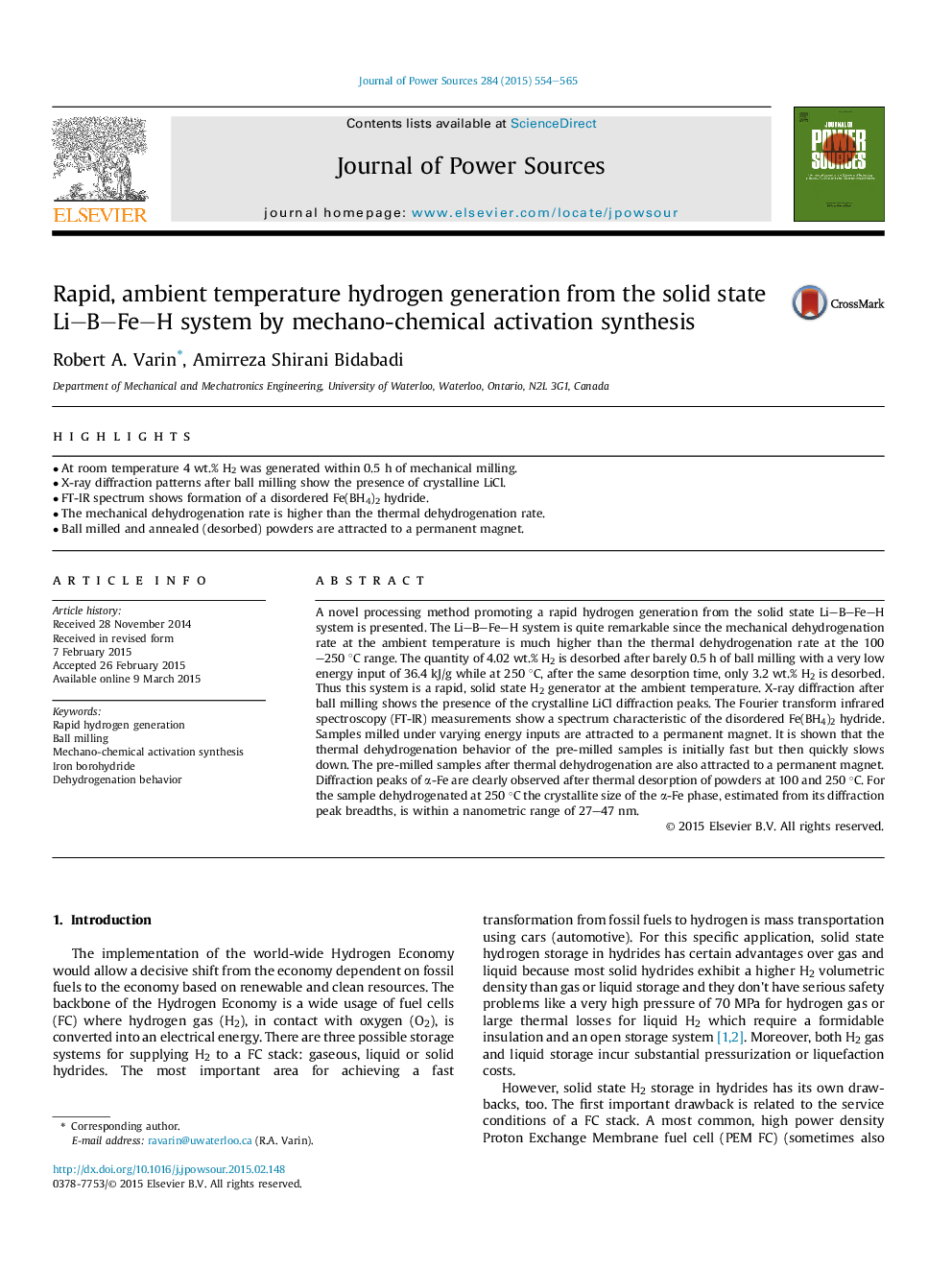| Article ID | Journal | Published Year | Pages | File Type |
|---|---|---|---|---|
| 7732735 | Journal of Power Sources | 2015 | 12 Pages |
Abstract
A novel processing method promoting a rapid hydrogen generation from the solid state Li-B-Fe-H system is presented. The Li-B-Fe-H system is quite remarkable since the mechanical dehydrogenation rate at the ambient temperature is much higher than the thermal dehydrogenation rate at the 100-250 °C range. The quantity of 4.02 wt.% H2 is desorbed after barely 0.5 h of ball milling with a very low energy input of 36.4 kJ/g while at 250 °C, after the same desorption time, only 3.2 wt.% H2 is desorbed. Thus this system is a rapid, solid state H2 generator at the ambient temperature. X-ray diffraction after ball milling shows the presence of the crystalline LiCl diffraction peaks. The Fourier transform infrared spectroscopy (FT-IR) measurements show a spectrum characteristic of the disordered Fe(BH4)2 hydride. Samples milled under varying energy inputs are attracted to a permanent magnet. It is shown that the thermal dehydrogenation behavior of the pre-milled samples is initially fast but then quickly slows down. The pre-milled samples after thermal dehydrogenation are also attracted to a permanent magnet. Diffraction peaks of α-Fe are clearly observed after thermal desorption of powders at 100 and 250 °C. For the sample dehydrogenated at 250 °C the crystallite size of the α-Fe phase, estimated from its diffraction peak breadths, is within a nanometric range of 27-47 nm.
Related Topics
Physical Sciences and Engineering
Chemistry
Electrochemistry
Authors
Robert A. Varin, Amirreza Shirani Bidabadi,
